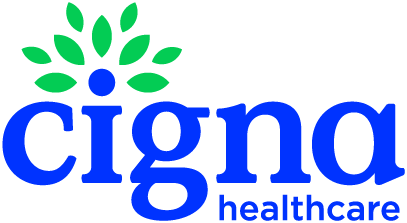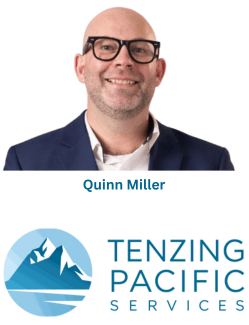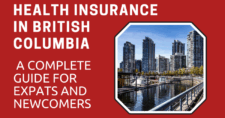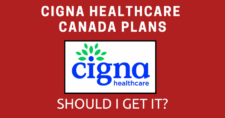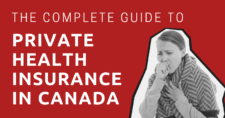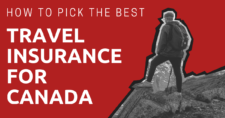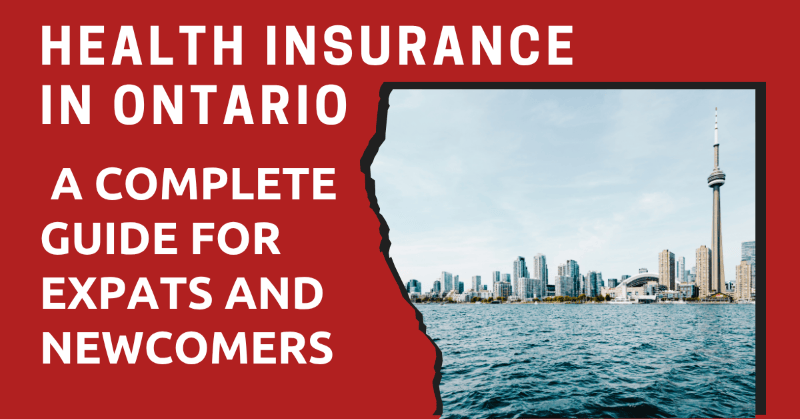
Learn how health insurance works in Ontario, including what OHIP covers, who’s eligible, and when to consider private, international, or travel insurance for expats, digital nomads, students, retirees, and anyone planning to live here.
When you move to any city in Ontario, such as Toronto, Ottawa, or Hamilton, health insurance should be one of the first things you look into. In Ontario, there’s a public healthcare program known as the “Ontario Health Insurance Plan,” or OHIP for short. It’s the main insurance option for people living here.
But OHIP is not for everyone. For example, digital nomads and students aren’t likely to get it. It’s also not suitable for everyone because of the long wait times for non-emergency treatment, and it doesn’t provide coverage abroad.
In this article, I’m going to break down all the details you need to know about health insurance in Ontario so you’ll know your options, including what’s covered, what’s not, what to expect, and more.
This article will take approximately 37 minutes to read. Don't have the time right now? No worries. Email the ad-free version of the article to yourself and read it later!
Disclaimer: This article may include links to products or services offered by ExpatDen's partners, which give us commissions when you click on them. Although this may influence how they appear in the text, we only recommend solutions that we would use in your situation. Read more in our Advertising Disclosure.
Contents
- Key Takeaways
- Overview of Ontario’s Public Health Insurance (OHIP)
- OHIP Coverage
- Private Health Insurance in Ontario
- Local Private Insurance
- International Health Insurance
- International Insurance Coverage
- International Plan Examples
- International Insurance Annual Limits
- Area of Coverage
- International Insurance Exclusions
- Additional Benefits
- How to Use International Insurance
- International Insurance Providers
- International Insurance Cost
- Who Should Get International Insurance?
- Which International Insurance Coverage Should I Get?
- Travel Insurance
- How’s About International Students?
- Comparison Table
- Which Health Insurance Should You Get in Ontario?
- Should I Stay Uninsured in Ontario?
Key Takeaways
- When you move to Ontario, the first thing you should do about your insurance is check whether or not you can get the public health insurance program, the Ontario Health Insurance Plan (OHIP).
- OHIP is free since it’s funded through taxes. With it, you can get free treatment in Canada, but you must meet the 153-day residency rule to qualify and maintain coverage.
- OHIP doesn’t cover prescription drugs (outside hospitals), dental care, vision care for most adults, private hospital rooms, or elective and cosmetic procedures.
- Private health insurance is common for those who need additional coverage for medications, dental, and vision services. Providers like Sun Life and Manulife offer supplementary plans.
- If you can’t get OHIP or need international coverage, you can check out international health insurance. It comes with global coverage and faster access to private care.
- Travel insurance is best if you plan to travel in Ontario or are waiting for OHIP approval.
- In any case, don’t go without insurance. Healthcare in Ontario without insurance is expensive. Even outpatient visits may require upfront payments of around CAD 600.
Overview of Ontario’s Public Health Insurance (OHIP)
In Canada, public health insurance is managed separately by each province and territory, which means the rules, coverage, and waiting periods can vary depending on where you live.

Public health insurance in Ontario is known as the Ontario Health Insurance Plan, or OHIP for short. It is the main type of insurance you should check out after moving here since it is the main health insurance used by both locals and expats living in Ontario.
In this section, I’ll explain who can apply for OHIP, what it covers and excludes, how much it costs, and whether it’s enough for your healthcare needs.
OHIP Coverage
You may have heard people praise Canada’s public health insurance and say that it’s one of the best in the world and even “free.” The truth is, there’s both good news and bad news.
The good news is that Ontario’s public health insurance, called OHIP, is quite comprehensive. It covers many essential healthcare services, including doctor visits (even walk-in clinics), hospitalization, and surgeries.
The bad news is that it doesn’t cover everything. You’ll still need to pay out of pocket or get private insurance for things like prescription medications, dental care, vision care, and other non-essential services.
Here’s a breakdown of what’s generally covered by OHIP:
- Pre-existing conditions
- Doctor visits such as family doctors, specialists, walk-in clinics, and so on.
- Hospital care such as doctor and nursing services, diagnostic tests done in hospitals, medications administered during hospital stays, and accommodation and meals while admitted.
- Lab tests and diagnostics
- Dental surgery in hospitals
- Eye exams:
- Children (0–19 years): One major eye exam every 12 months.
- Adults (20–64 years): Covered only if you have a medical eye condition such as glaucoma, cataracts, or retinal disease.
- Seniors (65+ years): One major eye exam every 18 months, even without a medical condition.
- Podiatry (foot health): Partial coverage. OHIP pays a portion of each visit (around CAD 7–16 per visit, up to an annual limit) and covers X-rays ordered by a podiatrist.
- Ambulance services: Covered in emergencies, though you may need to pay a standard fee (about CAD 45) for non-emergency transport, unless waived under certain conditions.
As you can see, the list of covered services under OHIP is quite comprehensive. However, there are a few important things you should know:
- OHIP only covers treatments that are considered medically necessary. For example, if a doctor decides that you need an MRI scan, it will be covered. But if you request one on your own without a medical reason, it won’t be.
- Elective and cosmetic treatments are generally not covered.
- You can only visit healthcare providers within the OHIP network. This is usually not a problem since OHIP-approved clinics and hospitals can be found throughout the province.
- OHIP provides very limited coverage outside Canada. In case of an emergency, you can get reimbursed for up to CAD 200 to CAD 400 per day for inpatient hospital services and up to CAD 50 per day for outpatient services. This applies only to emergency medical situations. Because of these low reimbursement limits, the Ontario government strongly recommends purchasing travel insurance or another form of private insurance whenever you travel outside Canada
To find out more about what OHIP covers, visit the official Ontario government website.
OHIP Exclusions
Like any insurance, OHIP doesn’t cover everything. Here’s a list of key medical costs that are not covered by the program:
- Prescription drugs (outpatient or pharmacy): Unless it’s medication you receive during hospitalization, OHIP does not cover prescription medications.
- Routine dental care and vision care: Dental cleanings, fillings, crowns, and routine eye exams for most adults are not covered.
- Ambulance services: While there is some coverage, you often need to pay a co-payment or fee. In non-emergency cases, OHIP may not cover the full cost.
- Private or semi-private hospital rooms: In most cases, you will be placed in a shared room unless a private room is medically necessary or approved by a doctor.
- Medical supplies and home-use devices: Items such as prosthetics, wheelchairs, braces, and home medical supplies are not fully covered.
- Services not considered medically necessary: Travel medicine, vaccinations for travel, or tests and immunizations not in the public schedule are excluded.
- Uninsured services: The Ontario Medical Association lists services such as prescription renewals without a visit, travel health services, and other non-insured physician services as patient-paid.
- Medical costs in private facilities: If you choose to receive care at a private facility, you will need to pay the full cost unless the provider is part of the OHIP network.
- Cosmetic or elective procedures
Because of these exclusions, many residents and expats in Ontario buy private health insurance to fill the coverage gaps, similar to what people do in British Columbia.
Support Programs
Another good thing about the OHIP system is that it has several support programs to help residents with the cost of medications, medical devices, and dental care. However, these programs are mainly designed for people in need, such as seniors, low-income residents, or those with disabilities.
Here are some of the main support programs available in Ontario:
- Ontario Drug Benefit (ODB): Covers prescription drugs for eligible groups such as seniors aged 65 and older, and people receiving social assistance.
- Trillium Drug Program: Helps Ontario residents who have high prescription drug costs compared to their income by offering cost-sharing subsidies.
- Assistive Devices Program (ADP): Provides partial funding for medical devices such as hearing aids, mobility aids, and prosthetic devices for eligible individuals.
- Healthy Smiles Ontario: Offers free dental care for children and youth in low-income families.
These programs are generally not available to expats or temporary residents, but it’s useful to know that they exist for those who qualify.
OHIP Fee
There is no fee for OHIP. You don’t have to pay any monthly premiums or registration fees. The program is completely free because it’s fully funded by taxes collected in Ontario.
However, if you work in Ontario, a portion of the income tax you pay goes toward funding the OHIP program.
Who Can Get the OHIP?
Now, here’s the big question: who can get the OHIP program?
One of the key requirements is the “153 days in 12 months” rule. This means you must be physically present in Ontario for at least 153 days in any 12-month period. You also need to be physically present for at least 153 of your first 183 days after moving to Ontario.
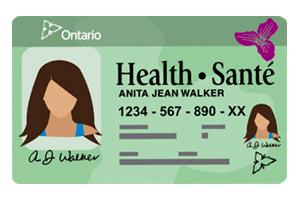
However, this doesn’t mean that you must stay for 153 days before you can apply. You can apply for OHIP right after you move to Ontario, but you need to meet the physical presence requirement to keep your benefits active.
Here’s a list of people who can apply for OHIP if they meet the residency requirements:
- Canadian citizens
- Permanent residents (PR holders) or going to apply one
- Temporary workers with valid work permits of at least 6 months
- Spouses and dependents of eligible temporary workers
- Protected persons or refugees
- To put it simply, if you plan to live in Ontario for more than 153 days in a 12-month period with the correct visa or status, there’s a high chance you qualify for OHIP.
On the other hand, if you are in Canada short-term or cannot obtain a long-term visa, such as a digital nomad or tourist, you won’t qualify for OHIP.
You can find the full eligibility list and details on the official Ontario government website.
Important: The 153-day rule is crucial. If you fail to meet this requirement, you may lose your OHIP benefits even if you are a Canadian citizen.
How to Apply for OHIP
If you’re eligible for OHIP, you can apply right after you arrive in Canada. You don’t need to stay for 153 days first. That rule only applies to maintaining your coverage once it begins.
To apply, you need to visit a ServiceOntario center in person. These centers are located throughout Ontario. You can find your nearest location and book an appointment here.
Here are the documents you’ll need:
- Proof of Canadian citizenship, immigration status, or OHIP-eligible status: a work permit, permanent resident card, or visa documents
- Proof of residency in Ontario: a lease agreement, utility bill, or bank statement
- Proof of identity: a passport, birth certificate, or driver’s license
If you’re unsure about your eligibility or which documents are required, it’s a good idea to call ServiceOntario in advance to confirm your situation.
After applying, it usually takes about three months for your coverage to start. Once approved, you’ll receive your photo health card (OHIP card), which you’ll use to access healthcare services.
Tip: After moving to any city in Ontario, apply for OHIP as soon as possible. It’s free for most residents and ensures you’re covered in case of medical emergencies.
If you plan to study in Ontario, make sure to check the specific details with your school, as coverage and costs can differ between institutions.
Real Experiences from People Using OHIP
Now that you know the basics of the OHIP program, let’s take a look at how it really works in daily life. To find out, I reviewed discussions from several expat and local communities, including Ontario Expats, Canadians in Ontario, Ontario Healthcare Support Group, and Reddit communities like r/ontario and r/PersonalFinanceCanada.
Here are some key findings:
- Emergency care works well: Like in other provinces in Canada, OHIP is designed to handle emergencies and life-threatening conditions efficiently. People said that when a situation was urgent, such as a serious illness or accident, they were seen quickly and received excellent care. One user shared that after a lump was discovered, they saw a specialist within six weeks, had surgery soon after, and received follow-up care without delays. Another said their family member received years of cancer treatment at top hospitals like Princess Margaret and Mount Sinai, all covered by OHIP except for parking fees.
- Non-urgent care can be slow: For minor or routine issues, the system can be frustratingly slow. Many residents said they had to wait 6–8 weeks just to see a general practitioner, and even longer to see a specialist for non-urgent problems. Because of this, people often visit emergency rooms for minor health concerns, which contributes to long ER wait times.
- Referrals are essential: The system revolves around your family doctor. To see a specialist, you must first get a referral. If your doctor thinks your condition is medically necessary, you’ll be referred and covered. But if you try to see a specialist on your own, you’ll have to pay out of pocket.
- Where you live matters: Waiting times can vary by location. For example, people in smaller cities like Kingston reported longer waits compared to those in larger cities such as Toronto, where there are more clinics and doctors available.
- Family doctor shortage: Another issue is access to family doctors. Some clinics stop accepting new patients, and if you go to a walk-in clinic while registered with a family doctor, there’s a risk your doctor might drop you as a patient.
To put it simply, OHIP provides good care for emergencies and serious conditions but it can be slow and frustrating for non-urgent cases. The system works best if you have a family doctor who can refer you to specialists when needed.
Should I Rely on the OHIP?
Yes. While OHIP has its weaknesses, especially when it comes to long waiting times for minor or non-urgent treatments, it’s still an excellent public healthcare program overall. If you’re eligible, it’s strongly recommended to apply as soon as you can.
Once you’re covered by OHIP, you can also get supplementary insurance from private companies to fill the gaps. These additional plans can cover things that OHIP doesn’t, such as prescription medications, dental care, vision care, ambulance services, and private hospital rooms.
Private Health Insurance in Ontario
While Ontario’s public health insurance (OHIP) is quite good, many residents still choose to buy private health insurance. However, the reason isn’t usually to access private hospitals or skip queues, as is common in some other countries.
Instead, people buy private insurance mainly to cover expenses that OHIP doesn’t include, such as:
- Prescription drugs
- Dental and vision care
- Ambulance and paramedical services
- Private hospital rooms
In Ontario, there are two main types of private health insurance:
- Local plans: These are offered by Canadian insurance companies and are often called supplementary insurance. They’re designed for people who already have OHIP but want extra coverage for things that aren’t included in the public plan.
- International plans: These are offered by global insurance companies and are mainly for people who can’t qualify for OHIP or need coverage that extends outside Canada. They’re popular among expats, frequent travelers, and those who prefer access to private international healthcare networks.
Local Private Insurance
These insurance plans are offered by well-known local companies in Canada such as Sun Life, Manulife, Green Shield Canada, and Pacific Blue Cross. They are popular among Canadians and permanent residents who mainly live in Ontario and want additional coverage for services not included under OHIP, such as prescription medications, dental care, and vision care.

If you come to Ontario for work, there’s also a good chance your employer will provide private health insurance as part of your benefits package. This additional coverage often helps reduce out-of-pocket expenses for everyday healthcare needs.
Let’s take a closer look at how local private insurance works in Ontario.
Local Private Insurance Coverage
The coverage of local private insurance in Canada mainly focuses on filling the gaps left by OHIP. These plans provide protection for healthcare services that are not covered by the public system, such as prescription drugs, dental care, vision care, and ambulance services.
Here’s a comparison of example plans from Sun Life and Manulife, two of the largest private insurance companies in Canada:
| Feature | Sun Life Standard Plan | Manulife Cover Me Essential Plan |
| Prescription Drugs | Covers most prescription medications with a DIN. Reimburses 70% of first CAD 7,000, then 100% of next CAD 93,000 (max CAD 100,000 per year). Includes diabetic supplies, injectables, and quit-smoking meds (CAD 250 lifetime). Excludes fertility, obesity, sexual-dysfunction, and cosmetic drugs. | Covers up to CAD 2,500 per year. Includes prescription birth control, glucose sensors, erectile dysfunction drugs, smoking cessation aids (CAD 300 lifetime), medical marijuana, IUDs, anti-obesity drugs, and vaccines. |
| Extended Health Services / Paramedical Practitioners | Covers physiotherapists, chiropractors, massage therapists, psychologists, etc. (CAD 300 annual cap per practitioner; CAD 1,000 for psychology/social work). Includes ambulance, nursing (CAD 5,000 per year; CAD 25,000 lifetime), hearing aids (CAD 500 per 5 years), prosthetics, wheelchairs (CAD 4,000 lifetime), orthotics. | Covers acupuncturists, chiropractors, massage therapists, and similar practitioners (no fixed caps listed). Includes nursing, psychologists, and registered social workers. |
| Vision Care | 100% reimbursement up to CAD 250 every 2 years (after 1-year waiting period). Covers exams, glasses, contacts, and laser eye surgery. | Covers lenses, frames, contact lenses, and laser eye surgery up to CAD 200 every 2 years. |
| Dental Care | 70% for preventive procedures (cleanings, exams, fillings, X-rays). 3-month waiting period. Excludes orthodontics and cosmetic treatments. | Includes exams, cleanings, fillings, and oral surgery. No orthodontic or cosmetic coverage mentioned. |
| Hospital Room Upgrade | 85% reimbursement, up to CAD 200 per day (max CAD 5,000 per year). | Not specified. |
| Emergency Travel Medical Coverage | Covers trips up to 60 days. Lifetime maximum CAD 1 million per person. Includes hospital, doctor fees, ambulance, repatriation (CAD 5,000), and vehicle return (CAD 1,000). | Covers up to CAD 5 million per person, 10 days per trip. CAD 200 deductible per claim, 9-month stability required for pre-existing conditions. |
| Medical Equipment / Devices | Covers prosthetics, orthotics, wheelchairs, and hearing aids (limits apply). | Covers canes, walkers, crutches, and other assistive devices (no listed limits). |
| Mental Health Coverage | CAD 1,000 per year for psychologists or social workers. | Includes psychologists and registered social workers (no limit specified). |
| Eligibility | Must live in Canada and have provincial health coverage (e.g., OHIP). Can cover spouse and dependents. Travel coverage ends at age 80. | Must live in Canada; family coverage available. |
| Integration with OHIP | Supplements OHIP and covers costs not paid by government programs. | Supplements OHIP coverage. |
| Premiums | Vary by age, province, and coverage level; Sun Life may adjust with 30-day notice. | Vary by age and coverage; generally similar to Sun Life. |
As you can see from the comparison table, the coverage can vary significantly between providers. For example, in prescription drug coverage, Sun Life reimburses 70% of the first CAD 7,000 and 100% of the next CAD 93,000 per year, while Manulife covers 100% but limits reimbursement to CAD 2,500 annually.
Because of these differences, it’s important to review each plan carefully before deciding. Based on the examples above:
- If you don’t need frequent or expensive prescriptions, Manulife may be a better fit since it offers full reimbursement within a smaller annual limit.
- If you have chronic conditions or ongoing medication needs, Sun Life is generally the stronger option due to its higher annual coverage cap.
Also note that these private insurance plans are supplementary to OHIP. If a service is already covered by OHIP, your private plan typically won’t pay for it again.
Local Insurance Exclusions
There are several exclusions in these private insurance plans as well. Here are the main ones:
- Cosmetic or experimental treatments.
- Services already covered by OHIP or other government programs.
- Self-prescribed medications or services provided by family members.
- Elective or non-emergency treatments done outside your home province.
- Medications for fertility, obesity, or sexual dysfunction.
- Dietary supplements, vitamins, and over-the-counter drugs.
- Athletic-use items and non-medical supplies.
- Non-emergency medical care received abroad.
- Dental treatments related to orthodontics, cosmetic work, or congenital conditions.
Each company may have slightly different exclusions. Usually, they include a detailed list of exclusions in the fine print on the product page. So, it’s important to read that section carefully. When in doubt, always confirm with your insurance broker or company representative in writing.
How to Get Local Insurance
Most local private insurance plans in Ontario work as supplementary coverage to the OHIP program. This means the main requirement for getting these plans is that you must already have provincial health coverage, which in Ontario is OHIP.
If you don’t have OHIP, it’s still possible to buy local private insurance, but your options will be more limited. Many local insurance companies offer visitor or temporary plans designed for people who can’t get OHIP.
Local Insurance Fee
The cost of local private insurance in Ontario typically ranges from CAD 80 to CAD 150 per month for an individual plan.
However, the exact premium depends on several factors, including:
- Your age and overall health condition
- The level of coverage you choose (basic vs. comprehensive)
- Whether you include dental, vision, or travel insurance
- The insurance provider and your place of residence in Ontario
- Whether you apply individually or through an employer group plan
In general, the more coverage you add, the higher the premium.
Visitor Insurance or Emergency Plans
Most local insurance companies in Ontario focus on supplementary plans for those already covered by provincial programs like OHIP. However, if you can’t get OHIP, such as in the case of tourists, digital nomads, or new arrivals still waiting for approval, you can buy visitor insurance or emergency medical plans instead.
These plans are designed mainly for unexpected illnesses or medical emergencies during your stay in Canada.
Typical benefits include:
- Coverage limits from CAD 15,000 to CAD 150,000
- Hospital and doctor services for emergencies
- Ground or air ambulance transportation
- Emergency dental treatment from accidents
- Paramedical services (such as physiotherapy after injury)
- Emergency air evacuation or repatriation home
- Coverage for meals, hotels, or travel companions if hospitalized
- Preparation or repatriation of remains in case of death
The cost of these plans usually ranges from CAD 90 to CAD 150 per month, depending on your age, health condition, and chosen coverage limit.
Tip: If you buy your plan after arriving in Canada, note that most insurers have a 48-hour waiting period before the coverage starts. To avoid this, it’s best to purchase the plan before you arrive.
Should I Get Local Private Insurance Plans?
There are two main cases to consider when deciding whether you should buy local private insurance in Ontario:
1. If you already have OHIP
If you’re already covered by OHIP, getting supplementary private insurance is usually only worth it if you have a medical condition that requires regular prescriptions or ongoing treatment. For many people, paying out of pocket for the occasional dental cleaning, eye exam, or medication can actually be cheaper than paying monthly premiums.
2. If you don’t have OHIP
If you can’t get OHIP, local emergency medical plans may not offer the best value. In many cases, I’ve found travel insurance or international health insurance gives you broader coverage, including treatment abroad, at a similar or even lower price.
Also, remember that local private insurance only covers you within Canada. So, if you travel often or split your time between countries, it’s better to look into international health insurance or travel insurance instead.
International Health Insurance
Another type of private insurance you can get in Canada is international health insurance, offered by global insurance providers.
Unlike local private insurance, which mainly fills the gaps in OHIP coverage, international insurance works as a standalone plan. It provides full medical coverage at a premium price, similar to what expats use when living abroad.
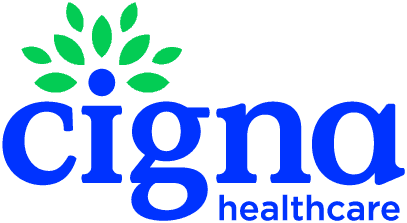
Some people feel it’s unnecessary since OHIP already provides good coverage. However, international insurance has several key benefits, especially for expats living in or moving through Canada:
- It covers you both within and outside Canada, ideal for those who travel frequently or live in multiple countries.
- It’s available to anyone, regardless of residency status. You can apply even if you’re new to Canada or waiting for OHIP eligibility. (However, Canadian citizens who live full-time in Canada are typically not eligible.)
- It allows you to visit private hospitals and clinics, which means faster access to specialists and less waiting time for treatment.
So, let’s take a closer look at what international insurance covers and how it compares to local options.
International Insurance Coverage
The coverage you get from international health insurance depends on the plan and options you choose. Some basic plans cover only hospitalization, while comprehensive ones include everything from outpatient treatment to medical evacuation and repatriation.
In general, international plans can be divided into two main types:
Basic Coverage
These are benefits typically included in every international plan:
- Inpatient treatment (hospital expenses during hospitalization)
- Private or semi-private hospital room (depending on the plan)
- Scans and imaging (X-ray, MRI, CT scans, etc.)
- Medications and surgery fees
- Doctor and specialist consultations during hospital stays
- Hospital-related expenses
- Maternity and childbirth care
- Cancer treatment
- Organ transplants
Optional Coverage
These are add-ons you can include for more comprehensive protection:
- Outpatient treatment and prescribed medications
- Mental health care and therapy
- Emergency evacuation and repatriation
- Annual health checkups
- Dental care (routine and major treatments)
- Vision care (glasses, contact lenses, laser eye surgery)
- Physiotherapy and rehabilitation
International Plan Examples
Here’s an example comparison between two popular international insurance providers used by expats in Canada and worldwide:
| Feature | Cigna Healthcare (Gold Plan) | PassportCard DE (Comprehensive Plan) |
| Geographic Coverage | Worldwide excluding the U.S. (option to include for 3 months) | Worldwide (with or without the U.S.) |
| Annual Limit | USD 2,000,000 | EUR 3,500,000 |
| Hospital Room | Standard private room | Semi-private or private room |
| Cancer Care | Covered in full | Covered in full |
| Organ Transplant | Covered in full | Up to EUR 250,000 lifetime |
| Outpatient Care | Up to USD 25,000 | Covered in full |
| Outpatient Surgery / Diagnostics | Covered in full (MRI/CT/PET up to USD 10,000) | Covered in full |
| Emergency Dental | Covered in full | Up to EUR 6,000 |
| Routine Dental (Optional) | Up to USD 2,500 | Up to EUR 2,000–5,000 (optional) |
| Health Checkups & Vaccinations | Up to USD 450 per year | Up to EUR 400 total |
| Maternity & Childbirth | Up to USD 7,000 inpatient; complications up to USD 14,000 | Up to EUR 5,000; complications up to EUR 100,000 |
| Emergency Evacuation / Repatriation | Optional | Covered in full |
| Payment Options | USD/EUR/GBP; annual, semiannual, quarterly, monthly | USD/EUR; annual, semiannual, quarterly, monthly |
| Unique Features | Flexible deductibles, strong global hospital network | Direct billing card for worldwide payments |
International Insurance Annual Limits
Most international health insurance plans include an annual limit, which is the maximum amount your insurer will pay per year for all medical expenses.
The standard limit starts at around US$1,000,000 per year, which is enough for most situations. However, given that healthcare costs in Canada can be high, especially for hospitalization or intensive care, it’s generally safer to choose a plan with at least US$2,000,000 per year.
This level of coverage should be sufficient even in severe cases that involve weeks of ICU treatment, multiple surgeries, or long hospital stays.
Area of Coverage
When choosing an international plan, you’ll usually have three options:
- Regional plan (covers medical expenses within a specific region)
- Worldwide excluding the US (includes coverage in most countries but excludes the United States)
- Worldwide including the US (includes coverage in all countries, including the United States)
For expats living in Canada, most choose either Worldwide excluding the US or Worldwide including the US coverage.
You should only select the “including the US” option if you actually plan to receive treatment there, as it can significantly increase your premium.
Even if you choose a plan that excludes the US, most insurers still include emergency coverage worldwide, allowing you to receive care anywhere in the world during an emergency. However, this emergency coverage usually comes with a much lower limit than your main annual coverage.
International Insurance Exclusions
There are certain exclusions you should know about when getting international health insurance:
- Pre-existing conditions: This is the biggest exclusion. Unlike OHIP, if you have any pre-existing condition, the insurance company won’t pay for treatment related to it. Some insurers, like Cigna Healthcare, may still cover stable conditions such as hypertension under maintenance care.
- Self-inflicted injuries
- Elective or cosmetic treatment
- Fertility treatment
Insurance companies include these exclusions in the policy fine print, which can be quite lengthy. Even if you don’t read every page, it’s worth skimming through. You should also ask your insurance broker or representative in writing to confirm what’s excluded in your plan.
Additional Benefits
In addition to core coverage, many international insurers provide extra benefits. For example, Cigna Healthcare offers telemedicine and case management. With telemedicine, you can speak directly to a licensed doctor within their network anytime, which is especially convenient in Ontario where non-urgent appointments often have long wait times.
It’s more comfortable to talk to a doctor from home than to wait for hours at a walk-in clinic during winter. In some cases, they can even send prescriptions directly to your door.
If you have a serious illness, case management gives you a dedicated contact who helps coordinate your treatment, schedule appointments, and handle hospital arrangements.
How to Use International Insurance
You can use your international insurance in Canada the same way you would in other countries.
- For hospitalization, your insurer usually handles direct billing with the hospital.
- For outpatient treatment, you typically pay first and then file a claim for reimbursement.
Tip: It’s always a good idea to contact your insurance provider before getting treatment to request pre-authorization, especially for hospitalization. This helps confirm what’s covered and allows the insurer to coordinate directly with the doctor or hospital.
International Insurance Providers
There are many international insurance companies offering plans for expats in Canada. Each has different coverage levels and pricing. Here are some popular options:
- Cigna Healthcare: One of the largest global insurers, known for flexible and comprehensive plans. You can read our full review here.
- GeoBlue: A US-based provider with strong plans for Americans those who need US coverage.
- IMG Global: Offers affordable international plans with more limited coverage. Some plans include a lifetime limit instead of an annual one.
- PassportCard DE: Offers a unique debit-style card that allows you to pay directly for medical services without upfront claims.
You can check out our expat health comparison page to find out more.
International Insurance Cost
The biggest drawback of international insurance is the cost. While the coverage is excellent, premiums can be expensive. Most plans range from CAD 200 to CAD 500 per month, depending on your age, coverage level, and area of coverage.
For example, the Cigna Healthcare Gold Plan with a US$2,000,000 annual limit costs around US$307.74 (about CAD 417) for a 40-year-old.
You can lower your premium by choosing a higher deductible (the amount you pay before the insurer starts covering costs) or by selecting cost-sharing options (where you pay a percentage of treatment expenses).
If you’re on a budget, choose a basic plan with a high deductible to reduce costs.
Who Should Get International Insurance?
There are mixed opinions about whether international insurance is necessary.
- Some believe it’s unnecessary since OHIP already provides good coverage, and having international insurance doesn’t help you skip wait times.
- Others say it’s useful because it allows faster access to private clinics for tests or second opinions. Some even use it to get treatment abroad, such as in the US or Mexico, for faster results.
In my opinion, these are the groups that might benefit from international insurance:
- Those who can’t get OHIP, such as digital nomads or people who don’t meet residency requirements.
- Those who travel abroad often or live in multiple countries.
- Those who prefer having extra coverage and don’t want to rely entirely on OHIP.
- Those waiting for OHIP approval who need temporary coverage (though for short-term stays, an emergency medical or travel plan might be more practical).
Which International Insurance Coverage Should I Get?
If you plan to buy international health insurance in Ontario, here are my suggestions:
- Hospitalization: This is always essential and included in all plans.
- Outpatient treatment: Unless you visit the doctor frequently, it’s often more affordable to pay out of pocket.
- Emergency evacuation and repatriation: Highly recommended, as Canada’s large geography and outdoor lifestyle mean accidents can happen in remote areas.
- Mental health: Worth adding since mental health issues are common. According to the Canadian Mental Health Association, about 20% of Canadians experience mental health problems.
- Health check-up: Optional. It’s not essential but can be useful if included with mental health coverage.
Travel Insurance
Travel insurance is a great option if you’re visiting Canada for a short stay or if you’ve just moved to Ontario and are still waiting for your OHIP coverage to start.
Coverage varies depending on the plan. Some only include medical emergency coverage, while others combine it with general travel benefits such as flight delays, lost baggage, or rental car accidents. Certain plans also include emergency evacuation, while others do not.

Medical emergency coverage means the plan only pays for treatment related to accidents or sudden illnesses that happen during your trip. For example, if you fall sick or get injured while in Canada, it will cover your hospital bills. However, it won’t cover ongoing or chronic conditions like cancer treatment.
If you experience a serious illness, travel insurance usually provides short-term emergency care and then arranges transportation back to your home country, where you can continue treatment under your national healthcare system.
To help you choose the right plan, here are three common types of travel insurance:
Monthly Subscription Plans
- Genki – Good if you want strong medical coverage.
- SafetyWing – Suitable if you also want general travel benefits, such as trip delays or lost luggage protection.
Medical-Focused Plans: ACS – A good choice for if you want affordable travel insurance with good medical coverage.
Adventure Sports Plans: World Nomads – It’s known for coverage for those who plan to ski, snowboard, or take part in other high-risk activities.
Tip: If you plan to do outdoor or adventure activities in Canada, always read the policy carefully. Many standard travel insurance plans exclude high-risk sports, and the ones that do cover them tend to cost more.
How’s About International Students?
Unfortunately, as an international student, you won’t be eligible for OHIP. Instead, you’ll be covered under the University Health Insurance Plan (UHIP) if you study at a public college or university in Ontario. For private schools, they may use different insurance programs.
The UHIP program isn’t free. Costs vary between institutions. For example, Toronto Metropolitan University charges CAD 756 per year, and the fee is automatically included in your tuition. This means you’ll need to pay it if you plan to study in Ontario.
Coverage under UHIP is generally similar to OHIP, covering medically necessary doctor visits, hospital stays, and emergency care.
Comparison Table
Here’s a quick comparison table to help you understand the differences between each type of health insurance available in Ontario. Please note that it provides only a general overview and doesn’t represent every plan, as health insurance coverage can vary widely between providers.
Always read the fine print carefully or check directly with your insurer before making a decision.
| Feature | OHIP (Public) | Local Private Insurance | International Insurance | Travel Insurance |
| Coverage area | Mainly Ontario. But it’s possible to get treatment in other parts of Canada too. | Within Canada | Worldwide (with or without US) | Depends on plan |
| Cost | Free (tax-funded) | CAD 80–CAD150 per month | CAD 200– CAD500 per month (avg.) | Varies by trip; about CAD CAD50–CAD150 per month |
| Who can apply | Ontario residents meeting 153-day rule | Must have OHIP (some visitor plans for those without) | Anyone except Canadians living full-time in Canada | Anyone traveling short-term |
| Prescription drugs | No | Yes | Yes | Emergency use only |
| Dental and vision | No | Yes | Optional add-on | Accident-related dental only |
| Hospitalization | Yes (public hospitals only) | Supplements OHIP (private/semi-private room) | Covered at private or public hospitals | Emergency treatment only |
| Outpatient visits | Yes (with referral) | Some coverage for paramedical services | Optional add-on, often covered | Only for emergencies during trip |
| Ambulance | Limited (co-payment may apply) | Yes | Usually included | Yes (emergency only) |
| Emergency evacuation | Limited (within Ontario only) | Sometimes included in travel add-ons | Fully covered in most plans | Usually included |
| Coverage abroad | Limited (up to CAD 200–CAD400/day) | No | Yes | Depends on plan |
| Pre-existing conditions | Covered | Covered if stable and not excluded | Usually excluded unless declared and accepted | Often excluded unless stable |
| Wait times | Long for non-urgent care | Same as OHIP (uses public system) | Shorter, access to private care | Depends on hospital; for emergencies only |
| Validity | Ongoing for eligible residents | Annual renewal | Annual renewal (or multi-year) | Per trip (or monthly for subscription plans) |
| Example providers | Ontario Ministry of Health | Sun Life, Manulife, Green Shield | Cigna Healthcare, PassportCard, GeoBlue | SafetyWing, ACS, Genki, World Nomads |
| Best for | Long-term Ontario residents | Those with OHIP needing extra coverage | Expats, travelers, or people without OHIP | Tourists or new arrivals waiting for OHIP |
Which Health Insurance Should You Get in Ontario?
In this section, I’ll give you a quick general idea of what kind of health insurance you should get in Ontario based on your situation.
- If you’ve just arrived in Canada and are waiting for your OHIP approval, you can get either an emergency medical plan from a local provider or travel insurance. In my opinion, travel insurance tends to offer better coverage and flexibility. Genki or SafetyWing are both good options.
- If you already have OHIP and mainly stay within Canada, you can rely on it for most essential healthcare. Consider supplementary insurance from local providers only if you need medications regularly or want dental and vision coverage.
- If you can’t get OHIP (for example, digital nomads) or travel abroad frequently, international insurance is a better fit since it covers you worldwide.
- If you want the freedom to seek treatment in another country to avoid long wait times under OHIP, international insurance is the most practical choice.
- If you’re a student, check with your university. In most cases, you’ll be automatically enrolled in UHIP or a similar plan, and the cost is already included in your tuition.
Should I Stay Uninsured in Ontario?
While it’s possible to remain uninsured, it’s strongly discouraged. Healthcare in Ontario can be extremely expensive without insurance. For example, an emergency room visit can cost CAD 1,000– CAD 4,000, and hospitalization can exceed CAD 5,000 per day depending on the treatment.
Also, as an uninsured patient, when you visit an outpatient department in most hospitals, you should expect to pay an upfront payment of around CAD 600. The doctor’s fee alone can cost about CAD 300 or more.
Going without insurance could easily put you at serious financial risk. If you’re on a tight budget, at the very least, get an emergency medical plan from a local provider or a basic international plan with a high deductible to reduce premiums.
Disclaimer
I’m not an insurance broker or financial advisor. However, I’m familiar with health insurance based on my experience running ExpatDen, where I frequently research and speak with licensed brokers to stay up to date on policies. This article is based on official information from various sources such as the Government of Ontario (Ministry of Health and OHIP), the University of Toronto, and Ontario immigration resources. I also reviewed real experiences shared by expats and locals in communities like Reddit (r/ontario, r/canada) and various Facebook groups for expats living in Ontario.
